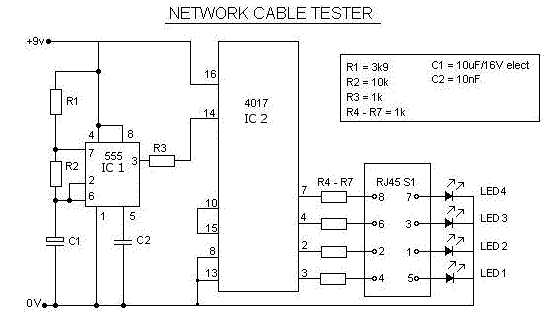
Simple Zener Diode Tester

A simple Zener diode tester circuit, when combined with a PWM generator, can be utilized to measure the breakdown voltage of Zener diodes. More generally, it can also measure the breakdown voltages (e.g., BVceo, BVcbo) of BJTs (Bipolar Junction Transistors). The circuit consists of a basic flyback converter that generates the high voltage required for the breakdown condition, along with a constant current source to limit the current flowing through the device under test. The transformer is adapted from the inductor used in a CFL bulb. Since a CFL typically operates at around 25,000 Hz, tuning the voltage converter to function at a similar frequency helps minimize converter losses. To implement the flyback configuration, a separate winding must be created as the primary. This can be accomplished by using magnet wire to wind several dozen turns around the outside of the inductor coil. The number of turns required depends on the desired output voltage; in this example, the ratio between the primary and secondary windings is approximately 1:25, yielding a DC output of around 150V.
While a resistor could have been used to limit the output current, this method poses the issue that the current flowing through the device being tested is heavily influenced by its breakdown voltage. To ensure a constant current, two high-voltage BJTs are employed to create a constant current source. The output current is determined by the Vbe value (typically around 0.7V) and the resistor between the base and emitter. Given the specified component values, the current is approximately 1mA. Although the hFE of the BULT118 transistor is relatively low, resulting in suboptimal performance of the constant current source, it is still significantly better than using a simple resistor for current limitation. To enhance the current source performance, higher hFE transistors or Darlington transistors can be utilized instead of the BULT118. The circuit requires a 5V PWM signal for operation. The output voltage of the converter can be fine-tuned through adjustments to the duty cycle and frequency of the PWM signal. An example code for generating the necessary PWM signal using Arduino is provided, although other methods (e.g., a 555 timer) can also be employed to create the PWM signal.
This circuit functions effectively as a Zener diode tester and can be adapted for various applications involving breakdown voltage measurements of different semiconductor devices. The flyback converter design allows for the generation of high voltages necessary for testing, while the constant current source ensures accurate and stable measurements. By adjusting the PWM signal parameters, users can achieve desired output characteristics suitable for specific testing requirements. This versatility makes the circuit a valuable tool in electronics testing and development.A simple Zenner diode tester circuit, when coupled with a PWM generator it can be used to measure the breakdown voltage of Zener diodes. Or more generically, it can be used to measure the breakdown voltages (e. g. BVceo, BVcbo) of BTJ transistors. As you can see, the circuit is consisted of a simple flyback converter to generate the high voltage needed for the breakdown condition and a constant
current source to limit the current flowing through the device under test. The transformer is modified from the inductor in a CFL bulb. Since a CFL typically switches at around 25, 000 Hz, we can tune our voltage converter to operate at roughly the same frequency to minimize the converter loss. In order to use the flyback configuration, a separate winding must be made as the primary. This can be easily done by using magnet wire to wind a few dozen turns outside the inductor coil. The exact number of turns needed is dependent on the desired output voltage. In my example, the ratio between the primary and secondary windings is roughly 1:25, and the DC output is around 150V.
We could have just used a resistor to limit the output current. The main issue of this approach is that the current flowing through the device to be tested depends heavily on the breakdown voltage of the device. In order to make this current constant, two high-voltage BJTs are used to form a constant current source.
The output current is determined by the value of Vbe (typically around 0. 7V) and the resistor between the base and the emitter. For the components value given, the current is approximately 1mA. Since the hFE of BULT118 is rather small, the performance of the constant current source is relatively poor, but it is still magnitudes better than the simple resistor current limiting approach. To improve the current source performance, you can use higher hFE transistors or Darlington transistor s in place of BULT118.
To drive this circuit, a 5V PWM signal needs to be supplied. You can fine tune the output voltage of the converter via the duty cycle and the frequency of the PWM signal. The code below shows an example of generating the required PWM signal via Arduino. Of course, you can use other methods (e. g. a 555 timer) to generate the PWM signal as well. void PWMGen(float dutyCycle, float freq) { if (dutyCycle > 1. 0) dutyCycle = 1. 0; else if (dutyCycle < 0) dutyCycle = 0; cli(); TCCR1B = _BV(WGM13) | _BV(CS11) | _BV(CS10) | _BV(ICNC1); //f0 = fclk / (2 * N * Top) long topv = (long) (F_CPU /(freq * 2.
0 * 64. 0); ICR1 = topv; OCR1A = (int) (float) topv * dutyCycle); OCR1B = (int) (float) topv * (1 - dutyCycle); DDRB |= _BV(PORTB1) | _BV(PORTB2); TCCR1A = _BV(COM1A1) | _BV(COM1B1); sei(); } void setup() { PWMGen(0. 5, 20000); //20kHz on pin 9 } void loop() { } 🔗 External reference
While a resistor could have been used to limit the output current, this method poses the issue that the current flowing through the device being tested is heavily influenced by its breakdown voltage. To ensure a constant current, two high-voltage BJTs are employed to create a constant current source. The output current is determined by the Vbe value (typically around 0.7V) and the resistor between the base and emitter. Given the specified component values, the current is approximately 1mA. Although the hFE of the BULT118 transistor is relatively low, resulting in suboptimal performance of the constant current source, it is still significantly better than using a simple resistor for current limitation. To enhance the current source performance, higher hFE transistors or Darlington transistors can be utilized instead of the BULT118. The circuit requires a 5V PWM signal for operation. The output voltage of the converter can be fine-tuned through adjustments to the duty cycle and frequency of the PWM signal. An example code for generating the necessary PWM signal using Arduino is provided, although other methods (e.g., a 555 timer) can also be employed to create the PWM signal.
This circuit functions effectively as a Zener diode tester and can be adapted for various applications involving breakdown voltage measurements of different semiconductor devices. The flyback converter design allows for the generation of high voltages necessary for testing, while the constant current source ensures accurate and stable measurements. By adjusting the PWM signal parameters, users can achieve desired output characteristics suitable for specific testing requirements. This versatility makes the circuit a valuable tool in electronics testing and development.A simple Zenner diode tester circuit, when coupled with a PWM generator it can be used to measure the breakdown voltage of Zener diodes. Or more generically, it can be used to measure the breakdown voltages (e. g. BVceo, BVcbo) of BTJ transistors. As you can see, the circuit is consisted of a simple flyback converter to generate the high voltage needed for the breakdown condition and a constant
current source to limit the current flowing through the device under test. The transformer is modified from the inductor in a CFL bulb. Since a CFL typically switches at around 25, 000 Hz, we can tune our voltage converter to operate at roughly the same frequency to minimize the converter loss. In order to use the flyback configuration, a separate winding must be made as the primary. This can be easily done by using magnet wire to wind a few dozen turns outside the inductor coil. The exact number of turns needed is dependent on the desired output voltage. In my example, the ratio between the primary and secondary windings is roughly 1:25, and the DC output is around 150V.
We could have just used a resistor to limit the output current. The main issue of this approach is that the current flowing through the device to be tested depends heavily on the breakdown voltage of the device. In order to make this current constant, two high-voltage BJTs are used to form a constant current source.
The output current is determined by the value of Vbe (typically around 0. 7V) and the resistor between the base and the emitter. For the components value given, the current is approximately 1mA. Since the hFE of BULT118 is rather small, the performance of the constant current source is relatively poor, but it is still magnitudes better than the simple resistor current limiting approach. To improve the current source performance, you can use higher hFE transistors or Darlington transistor s in place of BULT118.
To drive this circuit, a 5V PWM signal needs to be supplied. You can fine tune the output voltage of the converter via the duty cycle and the frequency of the PWM signal. The code below shows an example of generating the required PWM signal via Arduino. Of course, you can use other methods (e. g. a 555 timer) to generate the PWM signal as well. void PWMGen(float dutyCycle, float freq) { if (dutyCycle > 1. 0) dutyCycle = 1. 0; else if (dutyCycle < 0) dutyCycle = 0; cli(); TCCR1B = _BV(WGM13) | _BV(CS11) | _BV(CS10) | _BV(ICNC1); //f0 = fclk / (2 * N * Top) long topv = (long) (F_CPU /(freq * 2.
0 * 64. 0); ICR1 = topv; OCR1A = (int) (float) topv * dutyCycle); OCR1B = (int) (float) topv * (1 - dutyCycle); DDRB |= _BV(PORTB1) | _BV(PORTB2); TCCR1A = _BV(COM1A1) | _BV(COM1B1); sei(); } void setup() { PWMGen(0. 5, 20000); //20kHz on pin 9 } void loop() { } 🔗 External reference





